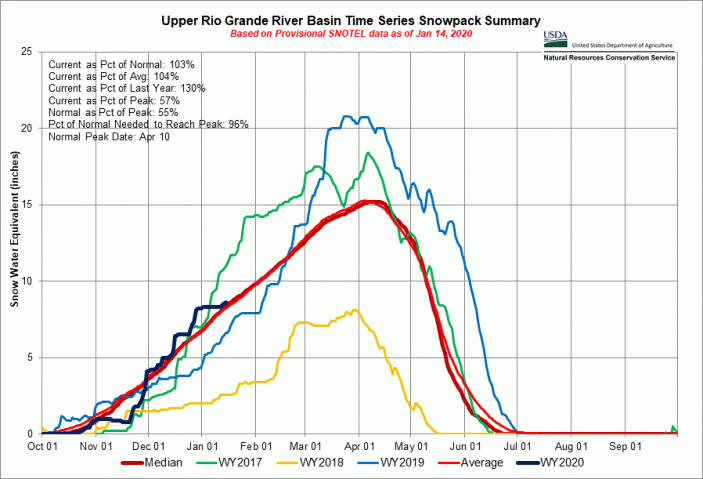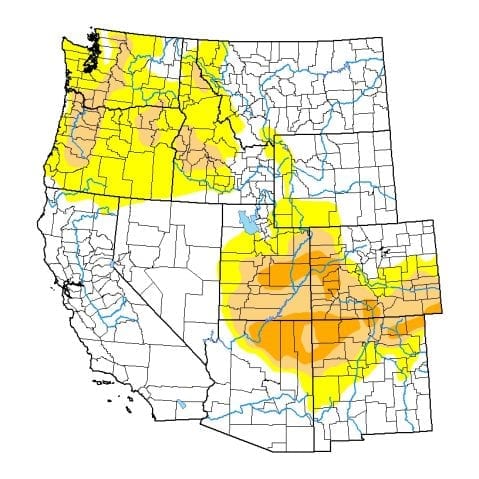Current work in wildlife, rivers, public lands, and climate
Press Releases
Rio Grande Snowpack About Average
“It may be a relief that the mountains are covered in snow, but that is only half the story,” said Jen Pelz, Wild Rivers Program Director and Rio Grande Waterkeeper. “This hotter and much drier world we live in is the reality going forward and average snowpack years will not yield average river flows. We need to start changing our mindsets and learn to manage water differently for both people and the environment.”
Dry conditions heavily impacted the soil moisture and groundwater levels in the upper Rio Grande Basin in Colorado and New Mexico. The San Luis Valley in southern Colorado is experiencing severe to moderate drought conditions as of January 9, 2019. Similarly, northern and central New Mexico are also facing severe to abnormally dry conditions. When soil moisture is low and aquifers are drawn down, much of the water from snowmelt is needed to replenish the water content of soil and to refill the aquifer resulting in lower spring river flows.
Climate science shows that the Rio Grande Basin can expect persistent dry conditions due to rising temperatures and more variable precipitation. The trend suggests that beyond drought, the region is experiencing aridification.
“Aridification in the Rocky Mountain West is not going to be solved with more dams, more storage, or more reliance on groundwater,” added Pelz. “It’s time to start living within the river’s means by reducing human uses and righting the historic injustice that rivers do not have a right to their own water.”
# # #
WildEarth Guardians (www.wildearthguardians.org) is a conservation non-profit whose mission is to protect and restore the wildlife, wild places, wild rivers, and health of the American West. Guardians has offices in Arizona, Colorado, Idaho, Montana, New Mexico, Oregon, and Washington, and over 275,000 members and supporters worldwide. Follow Guardians on Facebook, Twitter, and Instagram for updates.

